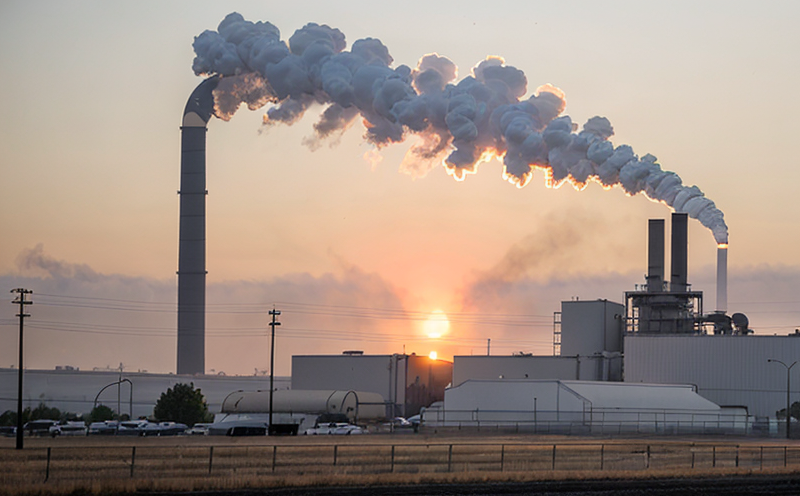EN 1948 Persistent Organic Pollutants POP Testing in Air
The European Standard EN 1948 provides a standardized method for the determination of persistent organic pollutants (POPs) in ambient air. This testing is crucial for ensuring compliance with environmental regulations and for protecting public health from harmful pollutants. POPs are substances that persist in the environment, resist biodegradation, bioaccumulate, and can be transported over long distances through the atmosphere.
The standard outlines a series of procedures to collect air samples, extract and concentrate the POPs, and analyze them using gas chromatography-mass spectrometry (GC-MS) or high-performance liquid chromatography (HPLC). This method ensures accurate quantification of target compounds such as polychlorinated biphenyls (PCBs), dioxins, furans, and other hazardous chemicals.
The testing process begins with the selection of appropriate sampling methods based on the specific requirements of each project. This may include the use of passive samplers or active sampling techniques where air is drawn through a filter to capture the pollutants. Once collected, these samples are stored under controlled conditions until they can be processed for analysis.
Preparation of the samples involves extracting the POPs into a suitable solvent and then concentrating them using either solid-phase extraction (SPE) or liquid-liquid extraction (LLE). The concentrated extracts are then analyzed using GC-MS or HPLC to identify and quantify the presence of target compounds. This analysis is critical for understanding the levels of pollutants in the air and their potential impact on human health and the environment.
Accurate reporting of results is essential, ensuring that all stakeholders have reliable data to make informed decisions. The report should include detailed information about sample collection methods, extraction procedures, analytical techniques used, and the final concentrations of each compound detected. Compliance with international standards such as EN 1948 ensures consistency and reliability across different testing laboratories.
By adhering to this standard, organizations can ensure that their emissions meet regulatory requirements while also contributing to broader environmental goals. This testing plays a vital role in monitoring industrial processes, assessing the effectiveness of pollution control measures, and informing policy decisions aimed at reducing POPs in the atmosphere.
- Sampling Methods: Passive vs Active Sampling
- Extraction Techniques: SPE vs LLE
- Analytical Tools: GC-MS or HPLC
- Data Reporting: Comprehensive and Traceable Results
The implementation of EN 1948 in industrial air quality testing is essential for maintaining high standards of environmental protection. By providing a standardized approach to POP detection, this method helps ensure that all tests are conducted consistently and accurately, leading to more reliable data.
Benefits
The use of EN 1948 for POP testing in air brings numerous benefits to industrial manufacturers and processors. One key advantage is the ability to monitor emissions levels closely, which helps companies identify areas where improvements can be made. This leads to more efficient operations and reduced costs associated with pollution control.
Compliance with regulations such as EN 1948 also enhances an organization's reputation by demonstrating a commitment to environmental stewardship. In today’s market, customers increasingly expect suppliers to have robust sustainability practices in place. Meeting these standards can help companies differentiate themselves from competitors and attract more business.
In addition, regular testing allows for early detection of any potential issues before they escalate into larger problems. This proactive approach can prevent costly shutdowns or fines due to non-compliance with environmental laws. Furthermore, it contributes positively towards achieving broader sustainability goals set by governments worldwide.
For research and development teams within industrial firms, this type of testing provides valuable insights that could lead to innovations in manufacturing processes or new product developments focused on reducing emissions further down the line.
The overall benefit lies not only in meeting legal requirements but also in fostering a culture of continuous improvement aimed at minimizing environmental impacts. By integrating EN 1948 into their quality management systems, businesses can ensure they are always working towards better practices and outcomes.
Quality and Reliability Assurance
The reliability of POP testing results is paramount to ensuring accurate assessments of industrial air quality. To maintain this high standard, we adhere strictly to EN 1948 guidelines throughout the entire process—from sample collection to final analysis.
- Sample Collection: Ensuring proper representation and integrity
- Extraction: Minimizing matrix effects on analysis
- Analysis: Using calibrated instruments for precise quantification
- Data Interpretation: Applying statistical methods to validate findings
We employ rigorous quality control measures at every stage, including internal audits and participation in proficiency testing programs recognized by international standards bodies like ISO. These steps guarantee that our results are consistent, repeatable, and meet the highest scientific expectations.
To further enhance reliability, we invest heavily in maintaining state-of-the-art equipment calibrated according to manufacturer specifications and industry best practices. Regular calibration checks ensure that all analytical tools perform optimally during each test cycle. This commitment to precision ensures accurate measurements of POP concentrations even under challenging conditions.





